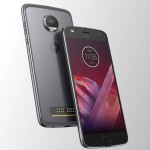
PRICE WHEN REVIEWED
- £519, US$499
HANDS-ON: DJI SPARK REVIEW
The thing about most drones which take photos and videos worth having is that they’re too big. Just as most people choose to leave their bulky DSLR at home and use their phone most of the time, drones such as the Phantom 4 are only taken out on special occasions.
But the Spark changes all that. It may not fold up like the Mavic Pro, but DJI’s latest drone is even smaller and lighter.
We’ve spent some time flying the Spark and trying out its new gesture control mode and automatic video modes. So consider this a preview that we’ll update to a full review once we’ve had a chance to fully test out all the features.
WHO IS THE DJI SPARK AIMED AT?
DJI is keen to point out this is not a ‘selfie drone’. It does take pretty great selfies, though.
Really, the Spark is like a mini Mavic Pro: it has all the same intelligent flying modes and similar obstacle avoidance tech. So it’s aimed at enthusiasts, not those that simply want an aerial selfie.
If anything, that makes it seem cheap, rather than insanely expensive – the Mavic Pro costs £1099 and the Spark £519.
That’s the ‘from’ price, though. And for that all you get is the drone and a polystyrene box. It’s a nice box, but all the other accessories will cost you.
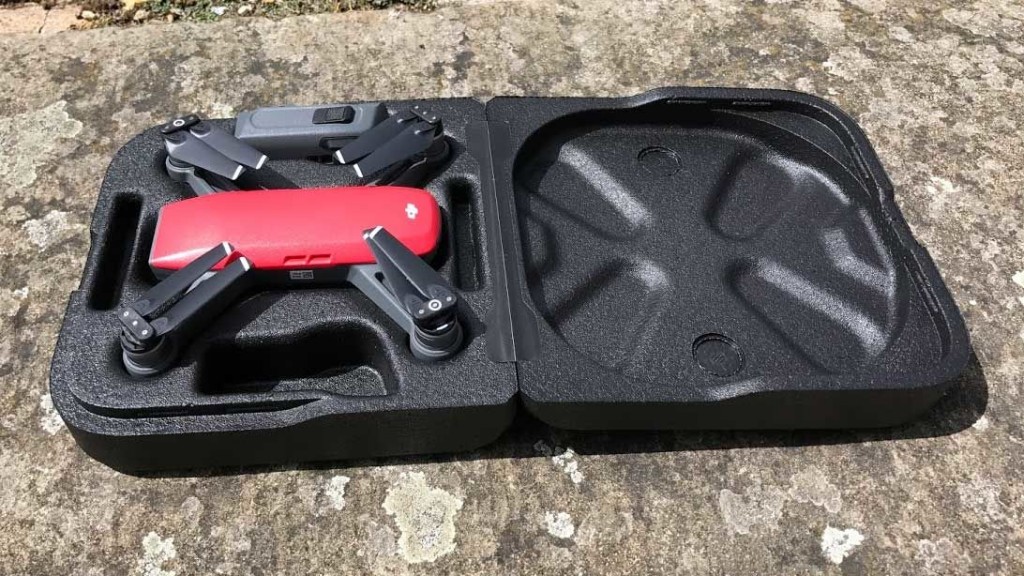
Despite being positioned as a drone for the family, prop guards aren’t included. And since you can land the Spark on your palm, this seems a bit strange. If you’re worried about spinning propellers causing harm, then a set of guards is £25.
The battery lasts around 15 minutes and takes 45 to recharge so you’ll want a couple of spares. They’re £55 each. You can control the Spark via a phone or tablet, but if you want more than a 100m range, the optional controller is £159.
This is why the Fly More Combo pack makes sense for most people. At £699, it saves you quite a bit over buying all those items separately. It also includes a charging hub that will charge three batteries at once.
A nice feature is that you can charge your Spark via microUSB (and a power bank) on the go – the port is hidden under a flap along with the microSD slot.
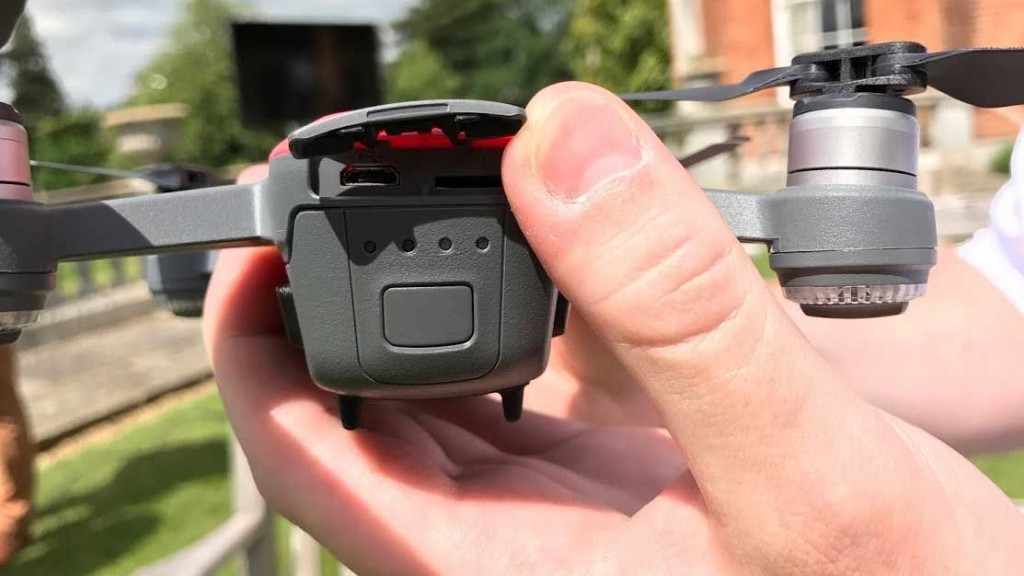
DJI SPARK: WHAT CAN IT DO?
Impressively, you can pop the Spark out of its box and have it flying in about 15 seconds. This is because you can use gestures so you only need to turn it on and double-press the battery button to enable this mode.
When the camera recognises your face, it will spin up the propellers and take off from your hand.
You then show it your palm to put it in PalmControl mode. In whichever direction you move your palm, the Spark flies that way.
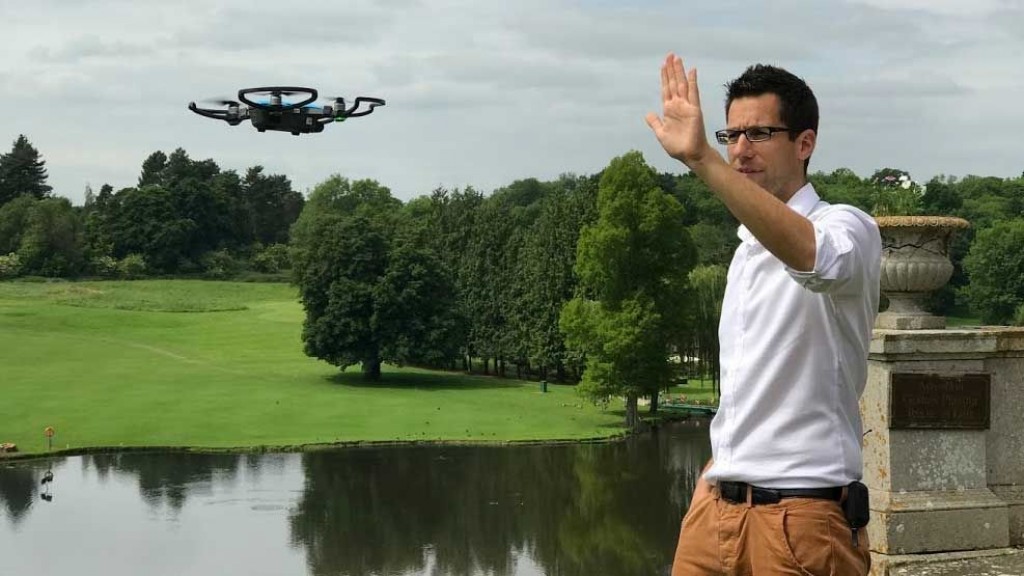
Hide your palm then slowly do a big wave and it will back off around 3m and fly up a bit. This is the selfie mode, in which you can mimic a picture frame with your fingers and it will flash its lights to give you time to strike a pose before taking a snap.
Hold your hands outstretched to form a ‘Y’ and the Spark will fly back to you, at which point you can hold out a flat palm for it to land on. It’s a bit unnerving the first time, but it really works.
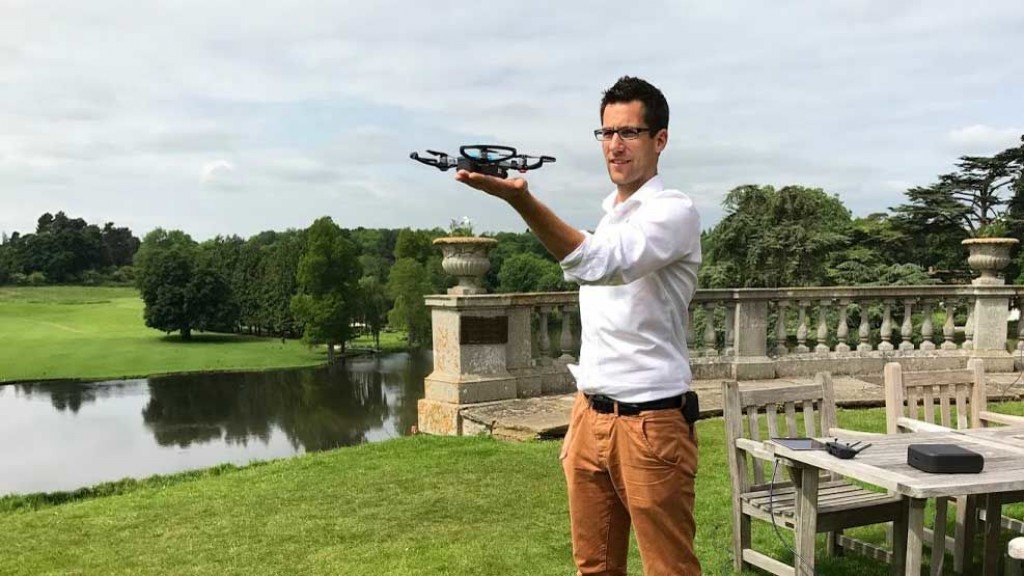
You can’t shoot any video with gestures, but DJI says it’s working on trying to make that possible. And hopefully it will improve the wave gesture recognition as this was very hit and miss compared to the almost perfect reliability when using PalmControl.
Phone control
If you connect to the Spark’s Wi-Fi (the SSID and password are on a sticker in the battery compartment) then you can use all of the features in the DJI GO app.
Wi-Fi works to around 100m, which may be enough for you, and the app offers on-screen virtual sticks so you can fly it manually. That’s tricky because there’s nothing to feel, so it takes bit of practice.
But importantly, the app includes the new QuickShot modes, Dronie, Helix, Circle and Rocket.
To use them you tap the one you want, draw a rectangle around you or the subject on which you want the camera to focus and then – when it’s locked on – tap GO. The Spark will automatically execute the manoeuver and record video at the same time so you don’t forget.
It even stops the recording and returns to you afterwards. If it looks like it might hit an unseen obstacle, you can tap the’ X’ to stop it.
The two that you’ll use most are Dronie (a reveal shot, flying away and up from you) and Helix, which is a kind of corkscrew motion up and away from you – very cinematic and almost impossible to do manually while keeping the camera focused on you.
Of course, there’s all the other modes you’d expect, including ActiveTrack and TapFly. The latter gives you two options: direction and co-ordinate.
The first simply causes the Spark to fly in the direction you’ve tapped on screen. Co-oridinate is more interesting as it makes it very easy to fly to an object you can see in the live video preview.
In all these modes obstacles will be detected and, if possible, avoided. This works only forwards and downwards, so it won’t stop the Spark crashing as it does a Dronie or Helix as there are no rear or side sensors.
Similarly, when returning to the home point it will detect and try to avoid obstacles. If you walk slowly towards it in gesture mode, the Spark will move backwards as it ‘avoids’ you.
Both cameras and infrared sensors are used on the front and underneath – the camera you can see below works like the Mavic’s and takes a short video when it takes off, then compares the scene it sees with this recording when it lands to try and get the exact spot.
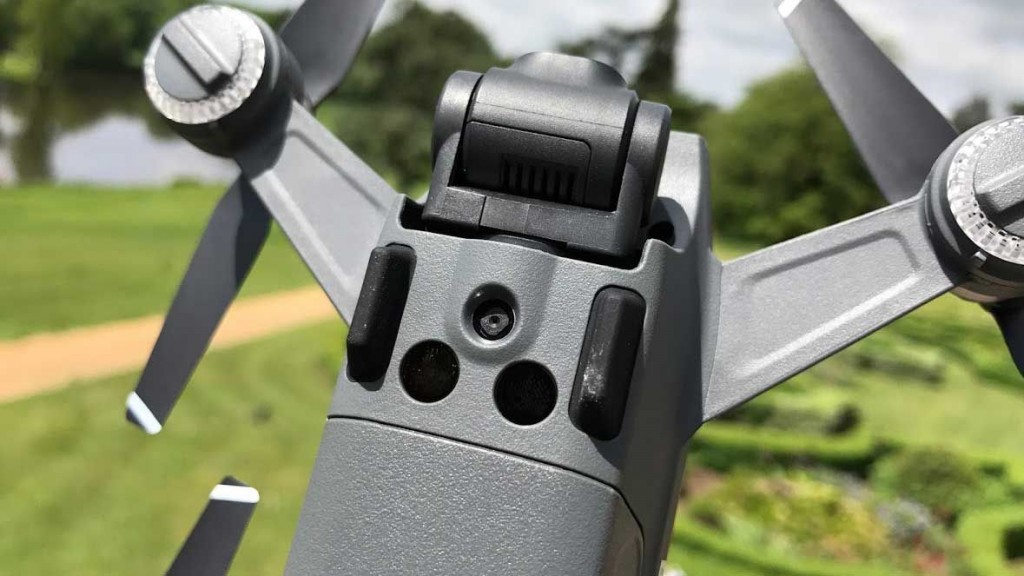
There are a couple of new photo modes: Pano and ShallowFocus. These are self-explanatory, but it’s great to see the former as it takes all the hard work out of shooting and stitching panoramas together. (They can be vertical as well as horizontal, too). Unfortunately, although we tried both modes, we didn’t get a close look at the end results.
One final nice feature in the app is that you can make the gimbal point up or down by tilting your phone or tablet. You can even adjust the sensitivity so you can make nice smooth, slow movements as you fly.
Despite the Wi-Fi connection, the video preview is smooth and the Spark is very responsive to the controls.
Remote controller
Flying the Spark using the controller is the best way to do it, if you want manual control. It’s very similar to the Mavic Pro’s remote, and has fold-out arms which grip a phone so you can see the video preview (and a map).
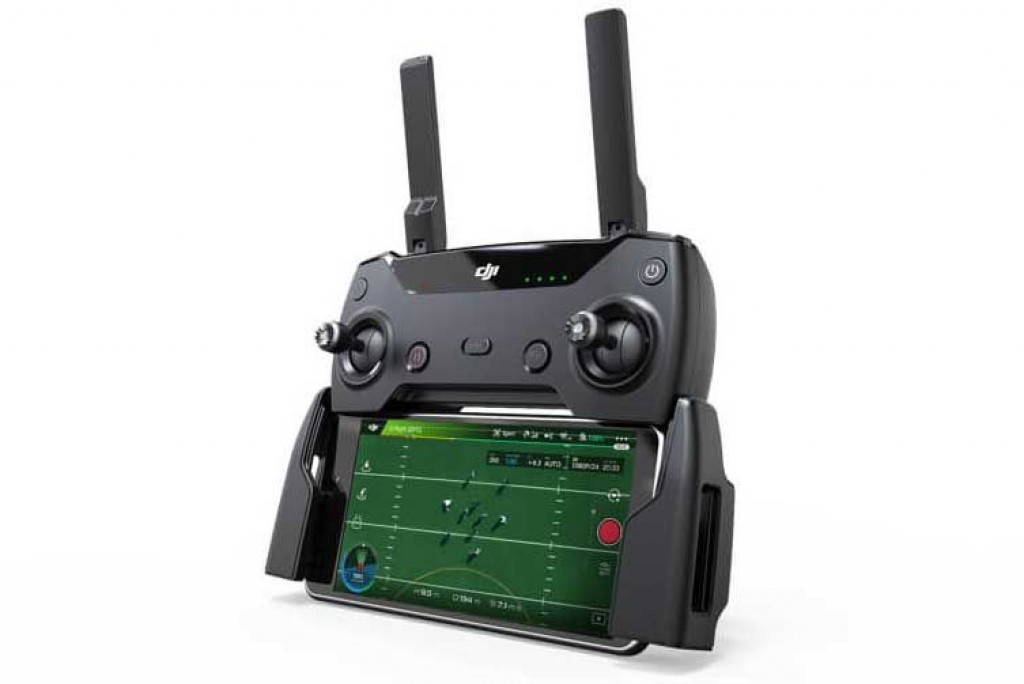
It lacks the LCD screen of the Mavic’s controller, which is a shame, but it’s comfortable to hold and use.
Plus it adds two feature you can’t get without it: a 1.2-mile range and Sport mode. Sometimes it’s fun to fly a drone fast, and in this mode the Spark will fly at up to 31mph (50kph). It’s exceptionally responsive, too.
DJI SPARK: VIDEO AND PHOTOS
We’ve yet to examine the full-quality 12Mp photos, since those we took strangely ended up at a resolution of 1440×1080, such as this one:
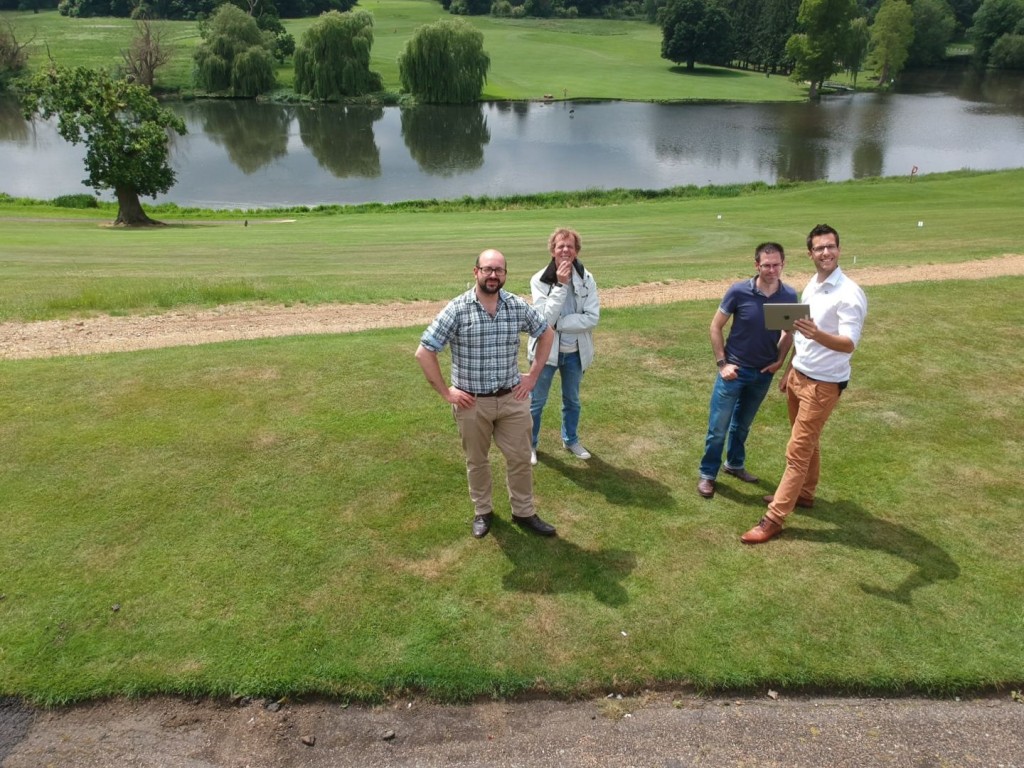
However, we did manage to record video at the Spark’s highest 1080p30 setting. Despite the two-axis gimbal, footage is pretty much as stable as the Mavic Pro’s.
The third axis (yaw – turning left and right) is stabilised by what DJI calls SmoothVision. This means the image is corrected by software, and it does a pretty ok job. However, whereas on three-axis gimbals yaw movements are damped, they’re much more noticeable in the Spark’s videos.
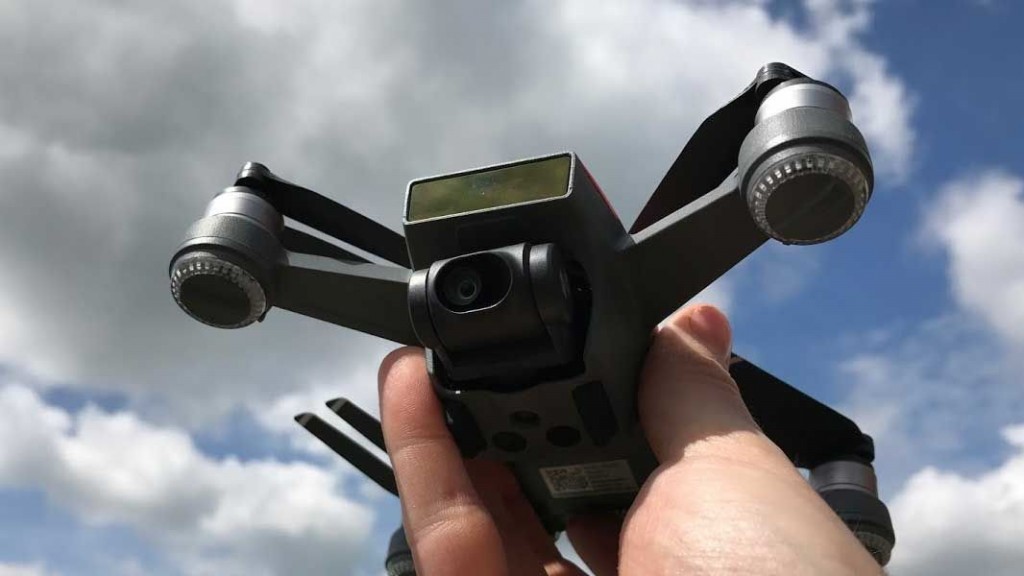
But as long as this doesn’t bother you, you’ll be pleased with the footage.
The 12Mp camera is fixed focus so you don’t have to worry about remembering to tap the screen to focus before taking any photos or videos as you do with the Mavic.
We’re told it has the same dynamic range as the Mavic’s cameras.
Of course, being limited to 1080p at 30fps rather than 4K means footage is less detailed than the Mavic Pro’s and you can shoot any slo-mo.
Again, as long as this isn’t a priority, you’ll be happy with the quality from the Spark.
OUR VERDICT
We still need to properly test all the Spark’s intelligent and QuickShot modes, plus more thoroughly test its photo and video capabilities before coming to a final verdict. But our initial impressions are that this is a very impressive package. It’s more expensive than we’d like, but the fact it’s so compact and easy to use means you’ll use it a lot more than a bigger, more expensive drone. And that is a good thing.
Sоurсе: pcadvisor.co.uk






































